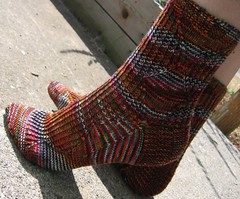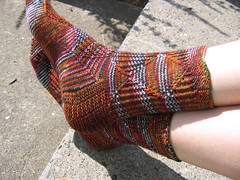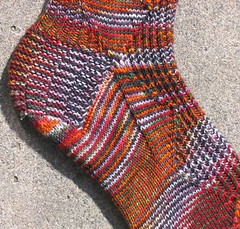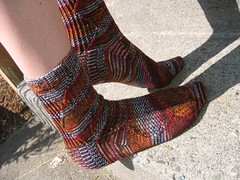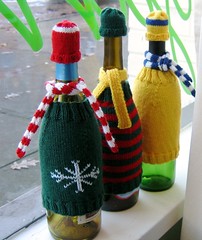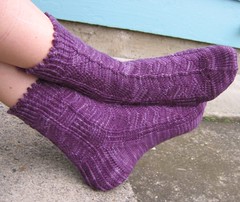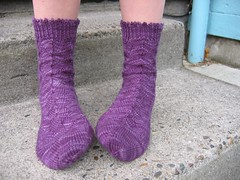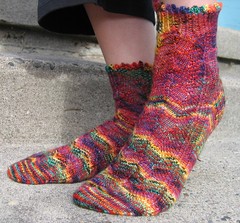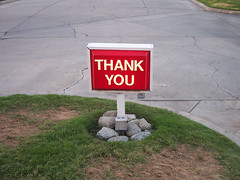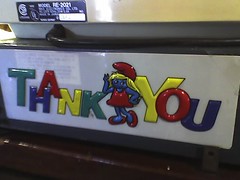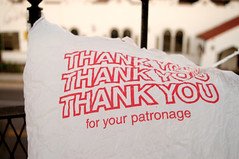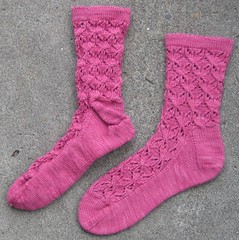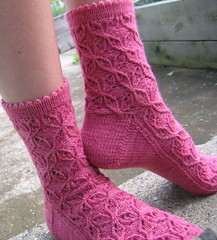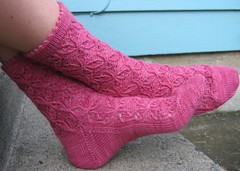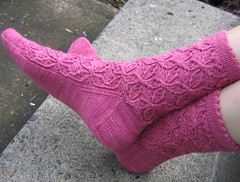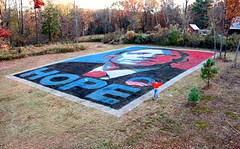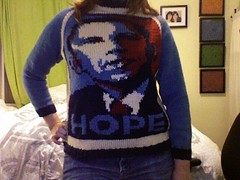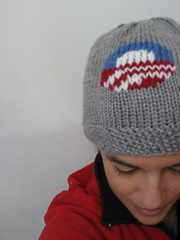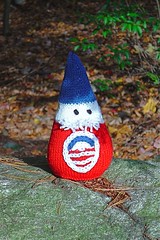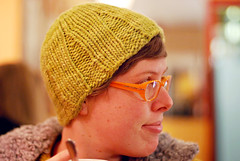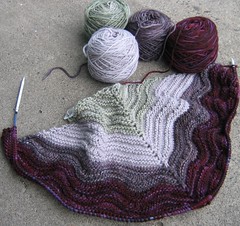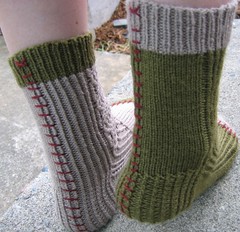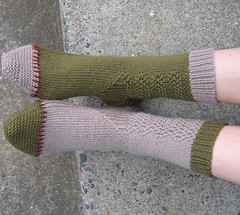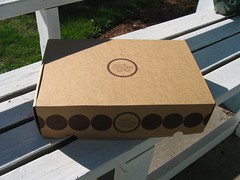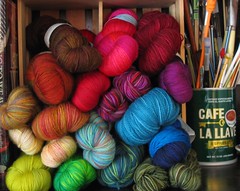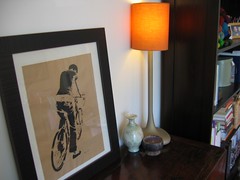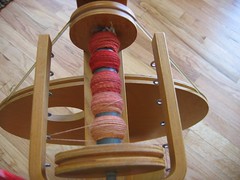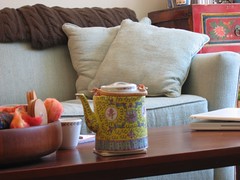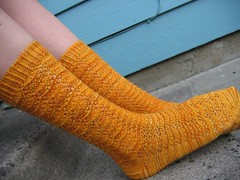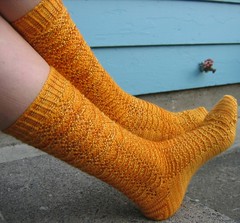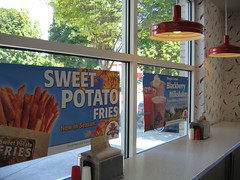Oh my friends, here we are again, in this place where I can't discuss most of my knitting. BUT I can share a few pictures from the recent OFFF, (Oregon Flock and Fiber Fest) which was a blast!
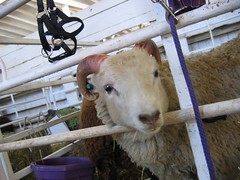
Today is the first installment in the Sock Design Workshop series, in which I try to share bits of knowledge I've learned over the last few years as a new designer. Not always about socks, but it is so named anyway.
I'm not starting in an obvious place. Why? I am busy these days working on a book proposal and I'm learning a LOT. The main thing I try to keep in mind for this current project is the same thing I consider when submitting patterns anywhere, so it is the perfect place to start, actually.
Take a sec to see another fluffy fiber friend.
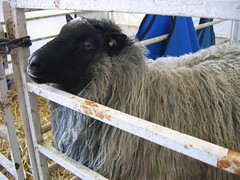
Okay, good. Let's talk about
the submission process. Yes, we'll talk about yarn, construction, design, concepts, pattern writing, etc. but not today. The process can be challenging, but like anything else, it will get easier with practice.
In General:I am going to suggest to you that you treat a design submission the way you would treat a job interview. Take it very seriously, and do exactly what you're supposed to do. Don't send anything that you're not happy with, is incomplete, done poorly, or you feel you won't be able to pull it off.
Magazines usually post on their website their criteria for submissions. For some, it's through email, and others require physically sending in proposals with swatches. Read through the criteria several times and make sure you follow it to the letter.
Where to Submit:At this point I have to assume you're already on
Ravelry, if not, get thee to the Ravelry asap. There are often calls for submissions posted in the Designers group. Go to the forums and search "call for submissions" and see what pops up. Also look up the websites for Interweave Knits, Knitscene, Vogue Knitting, knitty, (etc. etc. etc.) and check out their submission guidelines. Yarn companies are often looking for designs too.
Most places will want a proposal. There are exceptions, like
knitty. They will want pretty pictures of the completed item along with the pattern and a few other materials as well.
Really consider where you are submitting when you design. What is their target audience and skill level? Your design should fit their established style and the appropriate season.
A word about photos:Take the time to do this right. I am always reading about how "my camera doesn't seem to want to take a good picture" or some other nonsense. At the risk of sounding like a jerk, it's more likely to be user errors. (shock) Sorry, it had to be said. To be fair, there are low quality cameras out there, and if you have one, you'll probably want to start saving for a decent digital camera if you're serious about being a designer. There are no acceptable excuses when submitting poor photos to a magazine, you'll simply be rejected.
A few basic tips: (please do more research on this subject, this is very basic)
1. Never ever ever use the flash, unless you are a pro. Go outside or use a good window or if you are really into it, you can build a light box. I just go outside.
2. Avoid direct sun, dark shadows, early morning and dusk. These things will mess with your color. Cloudy days are great. Overcast sky makes for great color, but depending on what you're shooting, the result could look flat.
3. Take 25 more pictures than you think you'll need. At least. You can delete them later. It's way easier to pick the best 3 out of 50 than it is to send only one because they all look bad.
4. Focus. Your knitting has to be in focus for submission. This is not the time to be overly creative in this area.
5. Composition. Give yourself multiple options. Avoid cliches like leaning on a tree. Do you have garbage in the background? Look really hard.
6. Edit. Crop and color enhance as needed. Learn how to do this.
7. Save copies of the photos you want to use and re-name them appropriately. For example, "Quant right side" - The more organized you are, the better you will help an overwhelmed editor.
8. Use models, dress forms, sock blockers, any tools you can to get the best picture.
I'm sure I'm forgetting something but this is a good start. The main thing is to take your time and do it right. If you are a pro, these tips will seem ridiculous to you. If you needed them, I hope they help! Now, let's take a break and look at some more woolies.
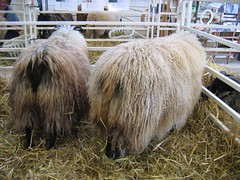 Swatches:
Swatches:Your swatch should be in your intended yarn. You can't send a chunky white wool and say, here is the cable pattern but imagine it in a lace weight red silk..." I can't believe I am saying this but you also have to block your swatch. Your editor may completely change out your yarn, color, gauge, whatever, but that's much later in the process. I also suggest you use yarn that is easy to find in a typical yarn shop.
Your Design:Only submit something you know how to accomplish. Do not sketch out something beyond your skill level or schedule limitations. Do not propose a body suit knit in mohair on US size 0 needles, unless you are very very adventurous and can roll with the consequences. In short, every single decision you make should be intentional.
We will talk more about yarn and designs later, in another blog post.
Before I forget, WRITE A GOOD COVER LETTER! Again, consider it a job interview.
In Conclusion:Be professional and nice. Keep up good communication and make your deadlines. This is an extremely competitive field and you have to find a way to stand out. You don't want to get a reputation for being difficult, late, and sloppy. If it goes well, they'll remember that they liked working with you and will want to again.
If you get rejected, do not take it personally. It could be for any reason, and unless they tell you why, do not use your imagination to fill in the gaps. Trust me, no good will come from that. Ask me how I know! Your design might not have fit into the current issue, plain and simple. Some very good designs out there were initially rejected by someone and eventually published somewhere else. It's no big deal, really. Don't give up!
These are the basics of design submissions. I haven't even mentioned self publishing. Obviously I have more to say on the subject, but perhaps we can chat again later, as this post has gotten quite long. Good luck!
